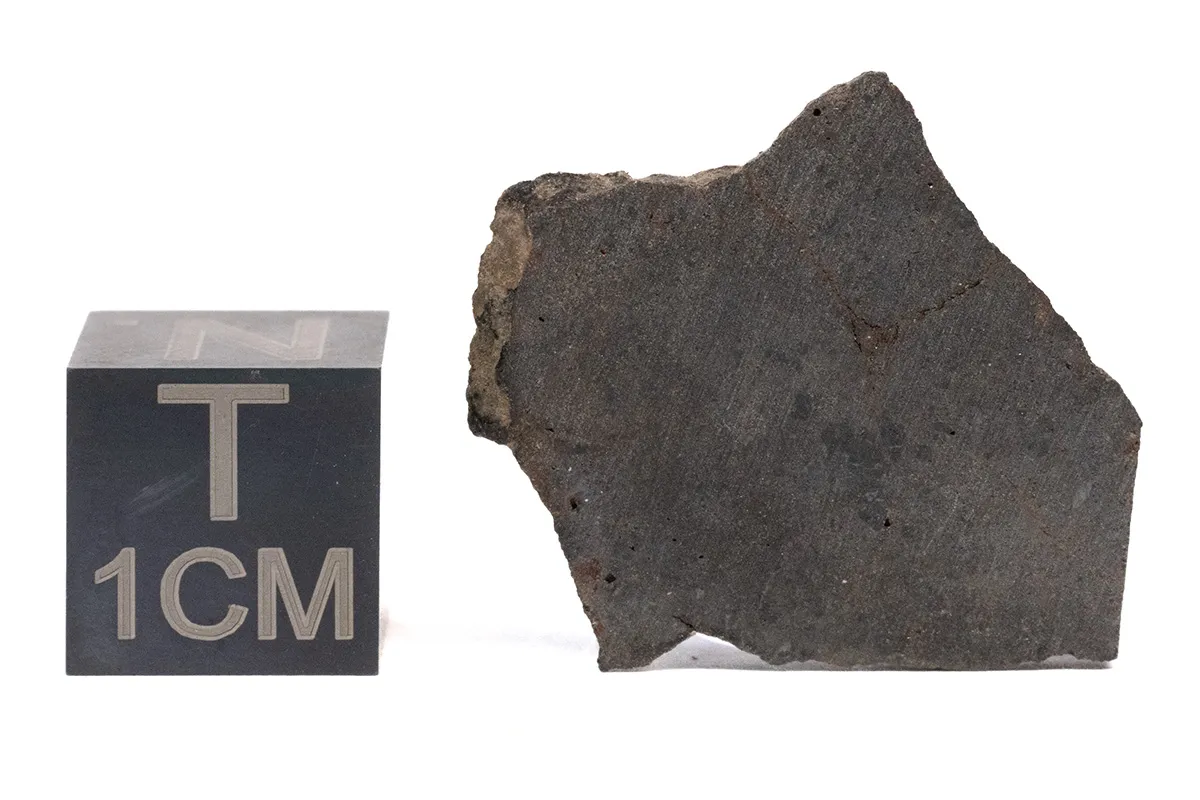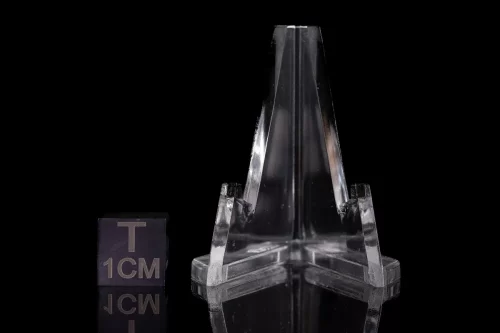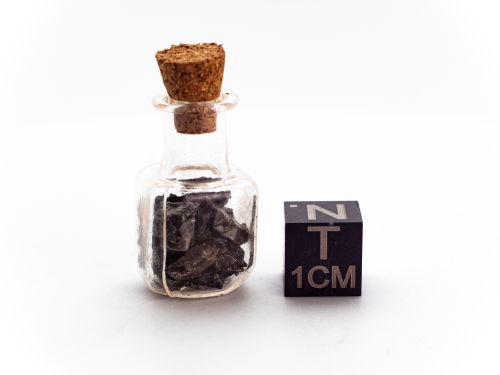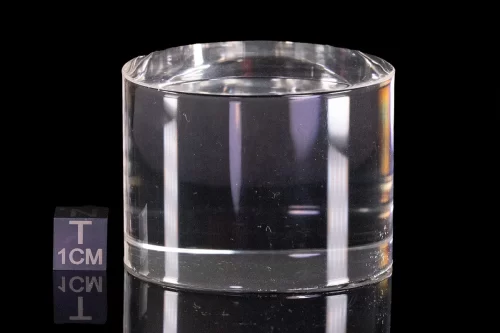Description
Achondrite, Angrite
Found in July, 2023 north of Tindouf, Algeria
Rafsa 005 was found near Tindouf, Algeria. This area is largely desert, with extremely hot summers and warm winters. During the Sand War, this area became the site of battles between Algerian and Moroccan forces trying to claim western Algeria.
The Rafsa 005 meteorite comes from this region. Stones totaling 2,027 grams were discovered. Scientists at the University of New Mexico studying one of these stones remarked that it has, “An oriented shape a with a wind-ablated exterior. The cut face shows dark red silicates and small metal grains with a protogranular texture.”
They have been classified as an angrite—these are stone meteorites that do not contain chondrules, known as achondrites. The angrites specifically are named after the Angra dos Reis meteorite that fell in 1869. They fall into two groups: plutonic and volcanic.
Rafsa 005 is of the plutonic variety, and the parent body these meteorites come from is still unknown. It was once speculated that they came from Mercury, but data collected by the MESSENGER spacecraft has cast significant doubt on these claims. The plutonic angrites are igneous rocks, meaning that they formed when molten rock cooled and solidified. This leads to thought that the plutonic angrites likely formed deep within the parent body, which scientists estimate accredited within the first million years of our solar system’s evolution.
The parent body these meteorites may have come from differentiated—formed a core, mantle, and crust—via a process of melting and crystallization of igneous rocks. This likely happened within the 2 million years after the first solids formed, about 4.57 million years ago. This means that angrites are the oldest known igneous rocks, and recorded important information about our early solar system, differentiation, and melting.
The other interesting discovery scientists made was that nearly half of the kamacite in the meteorite had been altered to iron oxide. Looking closely at the interior of Rafsa 005, thin veins of iron oxide can be observed.






Reviews
There are no reviews yet.